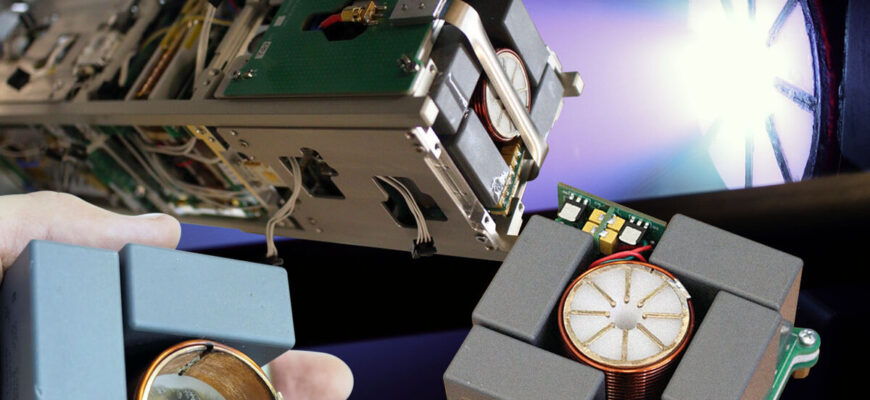In a significant stride for space technology, researchers from Samara University and the Moscow Aviation Institute have developed a groundbreaking computational system designed to precisely calculate parameters for the impulse gas valves integral to next-generation plasma engines. This innovation promises to be a game-changer for the burgeoning field of small satellite operations, offering a pathway to significantly extend their mission lifespan and operational efficiency.
The Unstoppable Rise of Small Satellites and Their Propulsion Predicament
The space industry is in the midst of a silent revolution, one not heralded by towering rockets but by compact, efficient spacecraft often no larger than a shoebox. These small and ultra-small satellites, including the popular CubeSat format, are increasingly taking on critical roles, from Earth observation and telecommunications to scientific research and in-orbit demonstrations. Their inherent advantages—lower launch costs and faster development cycles—have made space more accessible than ever before.
However, these diminutive orbiters often face a fundamental limitation: propulsion. While their compact size is a virtue, it also restricts the type and size of propulsion systems they can carry. Traditional chemical thrusters can be bulky and consume significant amounts of propellant, curtailing a satellite`s ability to maneuver, maintain orbit, or perform complex orbital changes. This is where advanced solutions, such as plasma engines, step onto the stage, promising a future of agile and long-lived small spacecraft.
Plasma Propulsion: A Glimpse into the Future of Space Travel
Among the most promising candidates for powering this new wave of miniaturized spacecraft are impulse plasma engines that utilize a gaseous working medium. The principle is elegantly simple, yet profoundly effective: a precisely controlled burst of gas is introduced into a discharge channel via a specialized impulse valve. Here, an electrical discharge ignites, superheating and ionizing the gas into a state of matter known as plasma. This plasma, a highly energized mix of ions and electrons, is then electromagnetically accelerated through a nozzle, generating thrust that can delicately push or decisively redirect the satellite.
It`s a dance of physics and engineering, where timing and precision are paramount. And at the very core of this intricate process lies a component often likened to the “heart” of the engine: the impulse gas valve. Its opening and closing—its very pulse—dictates the entire operational rhythm of the propulsion system, directly influencing the engine`s thrust and gas consumption efficiency.
The Russian Innovation: Orchestrating the Engine`s Heartbeat
Recognizing the pivotal role of this valve, scientists at Samara University named after Korolev and the Moscow Aviation Institute (MAI) embarked on an in-depth study. Their research meticulously examined diverse operational aspects of the impulse gas valve, aiming to understand how it influences various thrust parameters and gas flow rates. The culmination of this intensive work is a sophisticated calculation system capable of determining the valve`s optimal parameters based on both desired operating pressure and responsiveness.
Essentially, the Russian team has provided a highly advanced stethoscope for this “heart,” allowing engineers to pre-emptively design and fine-tune its performance. This system empowers designers with the tools to precisely tailor the gas flow path within such valves, ensuring maximum efficiency and reliability for future plasma engines. It`s a leap from trial-and-error to calculated precision, a subtle yet profound shift in aerospace design methodology.
Validation and the Promise of Extended Missions
To ensure the robustness of their innovative system, the researchers put it through rigorous experimental validation. The calculation algorithms were successfully tested on a gas valve developed at MAI`s Scientific Research Institute of Applied Mechanics and Electrodynamics, using nitrogen as the working fluid. The results confirmed the system`s accuracy and its immense practical utility.
The implications of this development are rather straightforward, and frankly, quite exciting: more economical and lighter propulsion systems for small spacecraft. For nanosatellites, which often have fixed operational lifespans dictated by their limited fuel reserves, this means a significant increase in active service life on orbit. No longer will these industrious little boxes be limited to fleeting appearances; they can perform more tasks, gather more data, and maintain their positions with unprecedented endurance.
This experimental research was carried out with the financial backing of the Ministry of Education and Science of the Russian Federation, as part of a national project focused on fundamental problems in aerospace transport systems. The findings, a testament to international scientific collaboration and knowledge sharing, have also been published in the esteemed journal, International Review of Aerospace Engineering.
This new system for calculating gas valve parameters might not grab headlines like a crewed mission to Mars, but it represents a crucial, foundational step in making future space operations more sustainable, efficient, and versatile. It`s a quiet revolution in precision engineering that will enable the next generation of small satellites to truly unlock their full potential.








